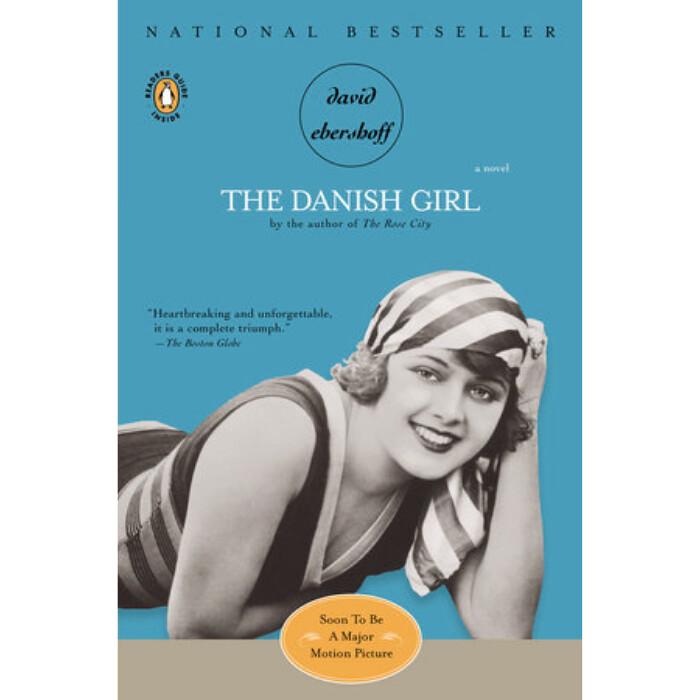The Danish Girl
Mô tả ngắn
On a gray April day in Dresden a few years ago, I climbed the forty-one steps to the Brühlsche Terrace to have a look at the view. The river Elbe was running dark and fast, and the city, a ghost of it...- Giao hàng toàn quốc
- Được kiểm tra hàng
- Thanh toán khi nhận hàng
- Chất lượng, Uy tín
- 7 ngày đổi trả dễ dàng
- Hỗ trợ xuất hóa đơn đỏ
Giới thiệu The Danish Girl
On a gray April day in Dresden a few years ago, I climbed the forty-one steps to the Brühlsche Terrace to have a look at the view. The river Elbe was running dark and fast, and the city, a ghost of its former self, sat sternly beneath a sky sagging with a late snow. The city bustled—electric trams and sub-compact cars and bicycles with wicker baskets and a police van in a chase with its blue light flashing. Across the river were stucco apartment complexes with washing tubs on the terraces and slab-concrete shopping arcades where garbage blew in a cold wind.A city shaking itself alive after a century of terrible history, it seemed to me that day. From that view it was nearly impossible to imagine the former Dresden, once called the Teutonic Florence, and the terrace where I sat in the chill was known as the Balcony of Europe. “The most beautiful city on the Continent,” proclaimed a 1909 English guidebook, Romantic Germany, the sort of book with hand-tinted illustrations of half-timber houses and water wells with little thatched roofs. And now this, a city bombed and burned and then choked for more than fifty years by the grip of the Communist East, startled by its recent freedom and the early green shoots of prosperity. Little remained to remind one of Dresden circa 1930. The view from the terrace only spoke of the air raids of February 1945; of the quartering of the German nation a few months later; of the long haul through the Soviet reign; of the wall a few hours to the north crumbling in November 1989. But I was there to research the beautiful past, the history through which Einar Wegener and Lili Elbe walked.
The wind was sharp and I sealed my eyes against its bite, and there, in the half-instant of a blink, lay the old Dresden where Einar arrived one cold day in 1930 to transform himself once and for all into a pretty shy girl named Lili. My job was to imagine the past, to hunt through the remnants that lay in the streets and in the library archives that could suggest a world that once was. I was in Germany alone, and other than the librarians at the Dresden Hygiene Museum and my hired translator who scrolled through the microfiche with me, I spoke to no one during my stay. And it was that day on the Brühlsche Terrace that I came to recognize one of the fundamental tasks of writing a novel such as The Danish Girl.
Every novel has its own internal memory, the organic creation that the reader and the writer recall, directly or indirectly, as the story propels itself along. But, as I sorted out the story of Einar and Lili and Greta, I began to wonder whose memory was relevant to my role as novelist. For Lili Elbe, that young Danish woman whom Greta Waud first brought into daylight, had a history and a memory that belonged to Einar—but did it really? On that gray day I began to understand some of the novel’s questions: whose memory informs our own; how does the past, seemingly obliterated, infuse our vision of the world at hand, and of ourselves.
Dresden was gone, razed by an impressively American combination of firepower and efficiency, and yet the city, all of it, lay at my feet, beneath the terrace where lovers rented paddleboats, in the square outside the Semperoper, in the young grass growing along the banks of the Elbe. 1930 was within my grasp, and so was Lili Elbe conjuring memories of a person gone—her own person gone; but not really. It led me to this: on the day that Professor Bolk performed his surgery on Lili Elbe, Einar Wegener disappeared; yet where did he go? From then who would house his memories? He was dead but unburied, and Lili, who very much believed she was a different soul than Einar, had to live with a history that was and was not her own.
I asked myself if this is any different than what humanity shoves upon the rest of us? Each of us is defined by our own past, but also by that of our family and lovers and friends and enemies, as well as our country and civilization. On that April day the wind crossed the terrace with an iciness that stung the eyes, and the novel which I was writing about Einar and Lili, still untitled and far from complete, took shape.
Identity—the loss and acquisition of it, the borrowing, the stealing, the rejection, the embrace; we grow up and declare ourselves yet the beautiful and awful past lingers forever. Beneath the rubble and the char, inside the pre-fab concrete and the asbestos tiles, swirling amid the factory belch and the cough of the car, rising in the wind, in the face of a daffodil bending beneath the last snow of the year, history and memory are held aloft by imagination and the sun as bright as a white kite above the river. Nothing is lost, I told myself that day in Dresden. A novel is written so nothing can be lost.
ABOUT DAVID EBERSHOFF
David Ebershoff is the publishing director of the Modern Library, a division of Random House, Inc. He is the author of the international bestseller The Danish Girl and visiting lecturer at Princeton University.
Giá sản phẩm trên Tiki đã bao gồm thuế theo luật hiện hành. Bên cạnh đó, tuỳ vào loại sản phẩm, hình thức và địa chỉ giao hàng mà có thể phát sinh thêm chi phí khác như phí vận chuyển, phụ phí hàng cồng kềnh, thuế nhập khẩu (đối với đơn hàng giao từ nước ngoài có giá trị trên 1 triệu đồng).....
Giá ANGLE
Thông tin chi tiết
| Công ty phát hành | Penguin |
|---|---|
| Nhà xuất bản | Penguin |
| ISBN-13 | 9780140298482 |
| SKU | 3613712423061 |
Từ khóa
english books alice in wonderland shakespeare les misérables spanish javascript phantom of the opera the hobbit odyssey william shakespeare lang leav call of the wild the fault in our stars gone with the wind haruki murakami stephen king the cat teach the seagull flies murakami haruki the catcher in the rye the thorn birds fifty shades of grey call me by your name romeo and juliet the midnight library white fang jack london the call of the wild jack london the lord of rings the call of the wild lovelace






